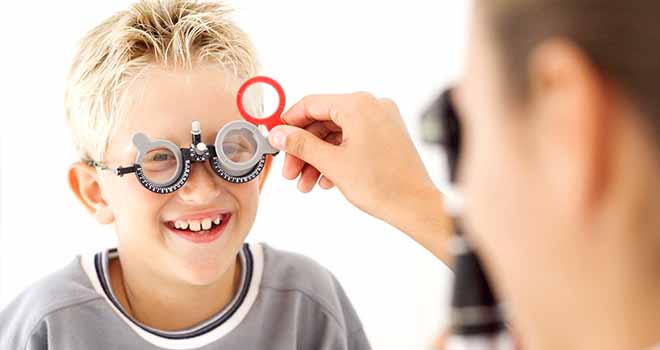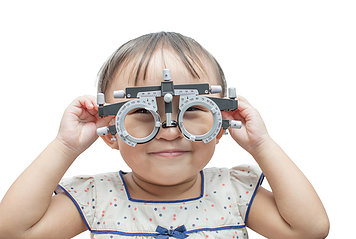Amblyopia
Amblyopia occurs when one or rarely both eyes do not develop the normal capacity to see early in childhood. When this happens, the brain will start to ignore the eye with worse vision. This actually makes the vision in that eye even worse.
Patients with amblyopia lack binocular vision or stereopsis which is the ability to blend the images of both eyes together. Stereopsis is what allows us to appreciate depth. Without steropsis, the ability to judge distance is impaired, a person can’t appreciate depth
A child’s visual system is fully developed between approximately the ages of 9-11. Until then, children readily adapt to visual problems by suppressing or blocking out the image.
If caught early, the problem can often be corrected and the vision preserved. However, after about age 11, it is difficult if not impossible to train the brain to use the eye normally.

Amblyopia is caused when the brain prefers one eye to the other. The brain’s preference for one eye over the other can weaken and reduce vision in the eye that is less used.
Any condition that affects normal use of the eyes and visual development can cause amblyopia. In many cases, the conditions associated with amblyopia may be inherited.
Amblyopia has three major causes. It occurs most commonly because of strabismus, or misaligned eyes. Another cause is refractive error, which means one eye is out of focus because it is more nearsighted, farsighted, or astigmatic than the other.
The other main cause of amblyopia is cataract or other disease that causes clouding of the eye's naturally clear lens. Any factor that prevents a clear image from being focused inside the eye can lead to the development of amblyopia in a child. This is often the most severe form of the condition.
It is not easy to recognize amblyopia. A child may not be aware of having one strong eye and one weak eye. Unless the child has a misaligned eye or other obvious abnormality, there is often no way for parents to tell that something is wrong.
Amblyopia is common affecting approximately two or three out of every 100 people.
Amblyopia is detected by testing the vision in each eye. Since it is difficult to measure vision in young children, an ophthalmologist often tests how well a baby follows objects with one eye when the other eye is covered.
Using a variety of tests, doctor observes the reactions of the baby when one eye is covered. If there is a weakness in the uncovered eye, the baby may try to look around the patch, try to pull it off, or cry.
An opthalmologist carefully examines the eye to see if other eye diseases may be causing decreased vision. These diseases include cataracts, inflammations, tumors, and other disorders of the inner eye.

To correct amblyopia, a child is forced to use the weak eye. This can be done in several ways. Most often amblyopia is treated by patching or covering the child's strong eye for weeks or months. Another method is prescribing glasses to correct errors in focusing. If glasses alone do not improve vision, then patching is necessary.
Amblyopia may also be treated by blurring the vision in the good eye with special eye drops or lenses. This forces the child to use the "lazy" eye. Even after vision has been restored in a weak eye, part-time patching of the strong eye may be required to maintain the improvement.
If a cataract or other eye problem is found, surgery may be required to correct that problem. Patching may still be necessary even after surgery.
Amblyopia cannot usually be cured by treating the cause alone. The weaker eye must be strengthened in order to see normally.
Without treatment, several problems may ocur. The amblyopic eye may develop a serious and permanent visual defect, depth perception may be lost. If the good eye becomes diseased or injured, a lifetime of poor vision may be the result.
Success in the treatment depends upon how severe the amblyopia is and how old the child is when treatment is begun. Children do not like to have their eyes patched, so parental care and involvement is essential.
Last Updated: October 23, 2024



























